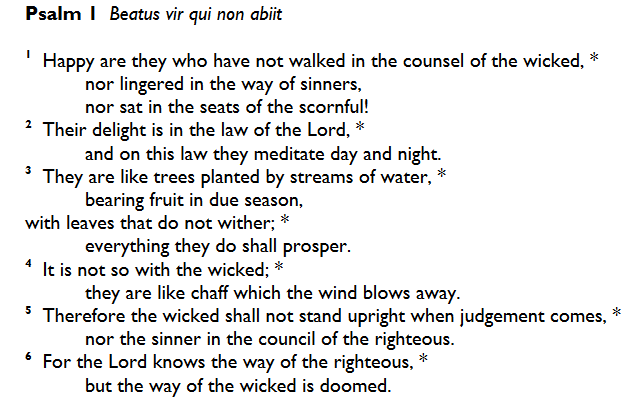Prayer and Benedictine Spirituality Part One: Prayer in Common
March 15, 2021
By: Father Benet Phillips, O.S.B.
“Let my prayer arise before you like incense”
Prayer is a hallmark of Benedictine life. The document, Education within the Benedictine Wisdom Tradition sums up the teaching and understanding of prayer in the Benedictine tradition beautifully and succinctly, “Benedictine monasteries cultivate a fundamental attentiveness to the way in God is present in the human mind, heart and indeed, in all creation. The primary way for doing this is the monastery’s daily rhythm of liturgical prayer.”
In each monastery there is a cycle of both liturgical or public prayer and private prayer. This essay will explore the importance and meaning of liturgical prayer and in our next issue the topic of private prayer will be discussed. Our community at Saint Anselm gathers in the Abbey Church 4 or 5 times a day depending on the day and season (our schedule changes slightly when school is not in session), regardless of the number, we spend a good part of our day praying together and our day is intentionally punctuated with times for communal prayer. This coming together is at the heart of Benedictine monasticism. Each monastery develops its own unique rhythm and style of prayer while maintaining common elements that are proper to the day, time and place.
With our primary apostolate of higher education, our life of prayer may be slightly different from a community that does not have an active apostolate or is engaged in agricultural work or some other industry. The life of the community informs its prayer and its prayer informs, sustains, and nourishes the common life of the community. It’s a wonderfully connected and interwoven dynamic that sustains not only the individual monk, but the entire community: day by day, month by month by month, season by season, year by year.
At Saint Anselm we gather for Morning Prayer (Matins and Lauds); Midday prayer (Terce, Sext and None); Evening Prayer (Vespers) and Night Prayer (Compline). When school is in session Night Prayer or Compline is prayed privately. In addition to these prayer times, we also gather together daily for the community’s daily Mass. Our primary prayer book is the Book of Psalms taken from the Old Testament with canticles or songs taken form the Old Testament in the morning and the New Testament in the evening. Eric Dean in his book Saint Benedict for the Laity writes, “Specific psalms come to be associated with particular times of day. Saint Benedict’s distribution of the psalms is exquisitely appropriate. The psalms with which the sun is greeted each morning at Lauds reminds us to praise the God of all creation. Read over Psalms 4, 90 and 133, and judge where there are any words better fitted to putting one in the mood for repose through the night.”
Throughout the day the monastic is being called back to live in the presence of God. At times the call to prayer can be very inconvenient: if I could just send one more email, make one more call, check one more thing off the “to do” list, the list could go on and on, but it is precisely at that moment that we need to stop, (re)focus our attention and energy on the fundamental monastic stance of living the common life in the presence of God. Common prayer is a wonderful reminder of why we came to the monastery in the first place. Sister Laura Swan in her book Engaging Benedict comments, “Benedictine prayer is basically a slow drip method of transformation. Drop by drop with each momentary experience of God, we slowly let go of the vast distance we have placed between ourselves and the Holy One. Monastic prayer takes time and persistence and patience. It is the slow immersion into God.”
Prayer

Questions for reflection
How can prayer be part of my daily routine?
What is my concept of prayer?
How does prayer change my understanding of God? What are my images of God?
Is praying with a community important to you – why or why not?